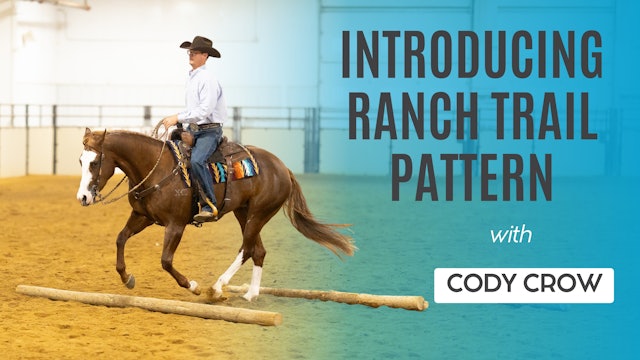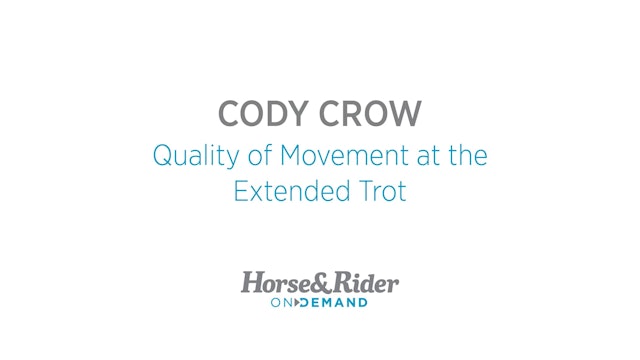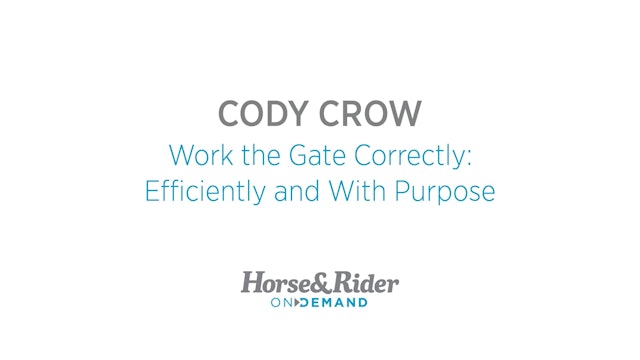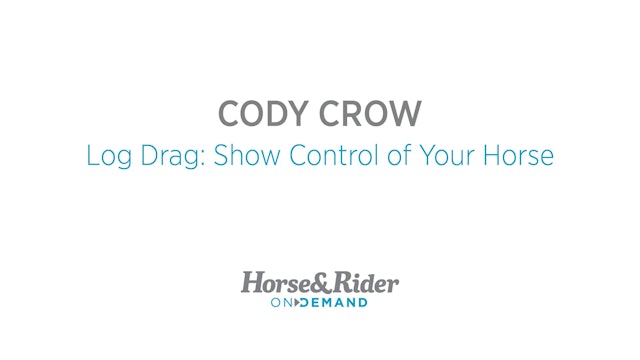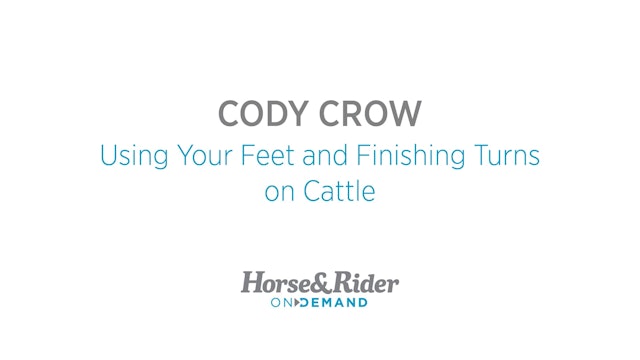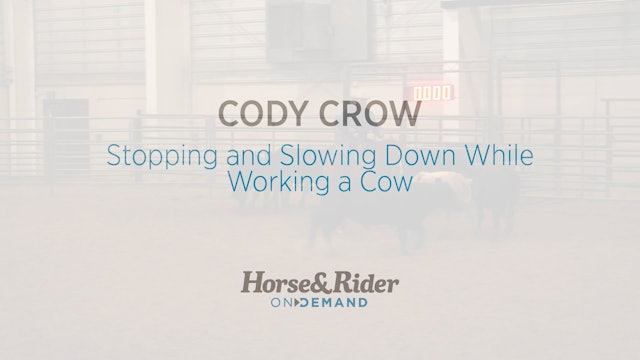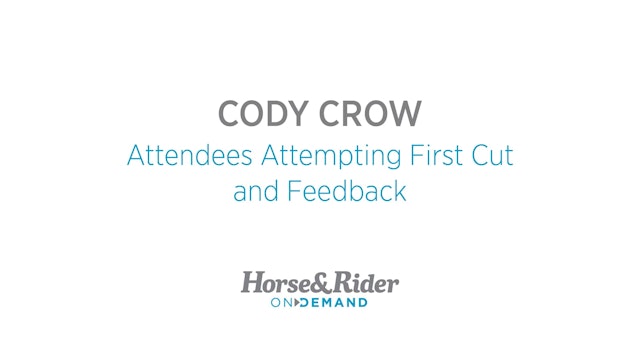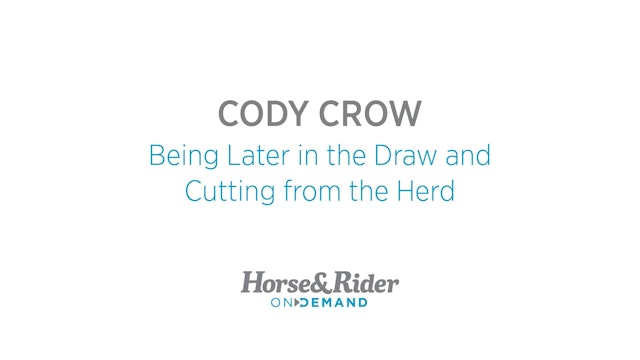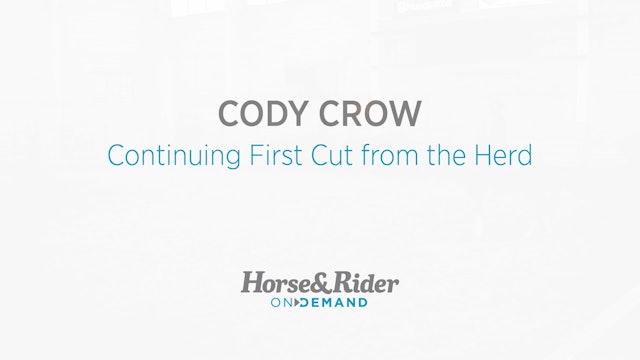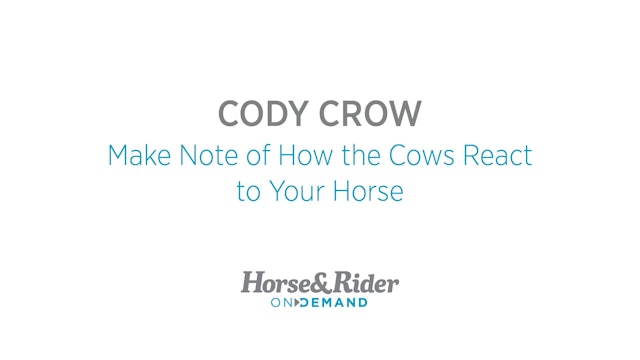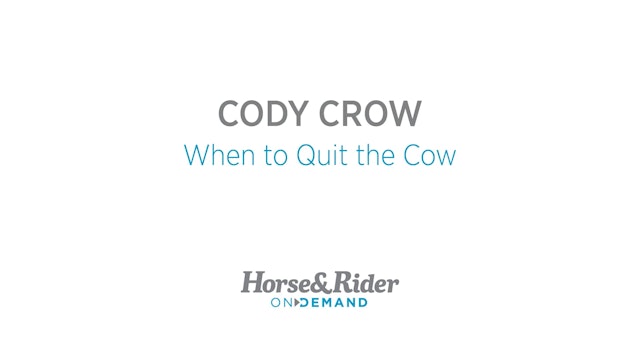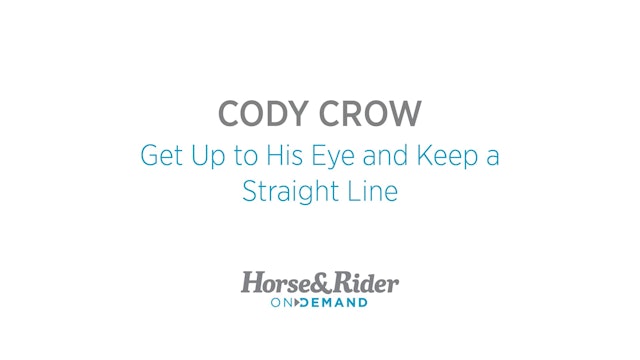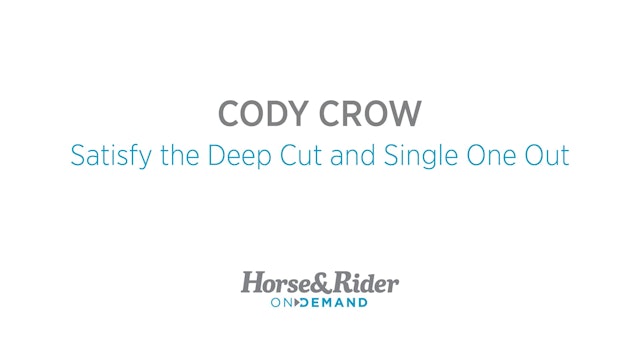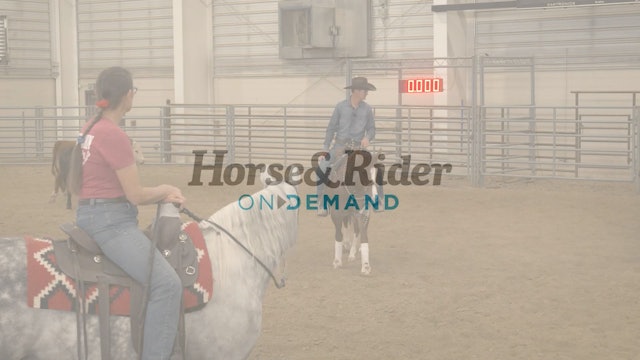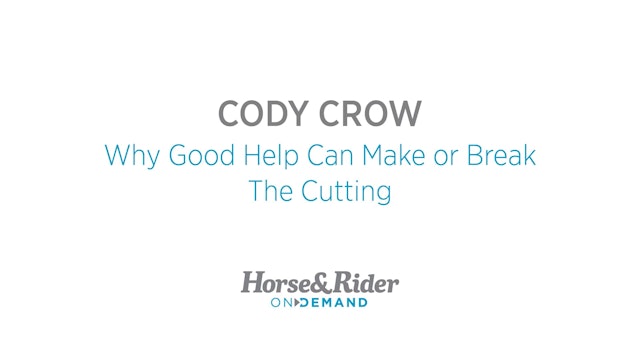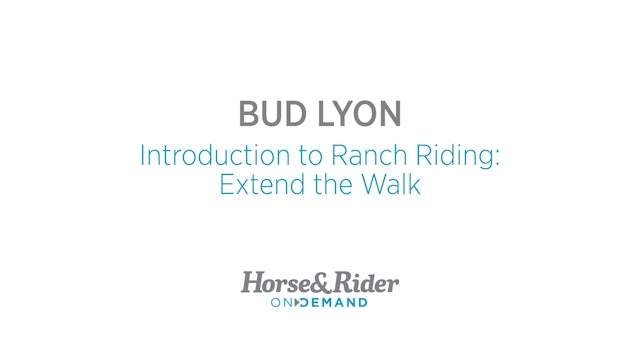How to Prepare for Your Ranch Horse Show
The "How to Prepare for Your Ranch Horse Show" series on Ride TV offers essential tips and strategies for riders looking to excel in ranch horse competitions. Led by experienced trainers, this series provides a comprehensive guide to preparing both horse and rider for a successful show experience. From fine-tuning ranch riding patterns and transitions to understanding the judging criteria, viewers will gain valuable insights into the skills required to perform at their best. The series also covers key aspects such as ring etiquette, equipment preparation, and mental strategies, ensuring riders are fully equipped to make a lasting impression in the competition.
-
Explaining Lope Overs
As attendees look on, Cody explains the importance of maintaining a smooth gait during lope overs. He instructs you to look where you're heading, and guide your horse efficiently. Judges are impressed with square turns that show you can guide your horse in tight areas.
-
Introducing Ranch Trail Pattern
Cody talks about each step of the Ranch Trail Pattern he will be using. He walks through the obstacles and gives a general overview of each obstacle.
-
Qaulity of Movement at the Extended Trot
For the extended trot, Cody teaches you how to push your horse to extend their trot without losing their smooth gait. You will learn what judges look for during the extended trot.
-
Work the Gate Efficiently and With Purpose
For your first obstacle, Cody talks about working the gate with purpose, and effciently. He goes over where to stand to open the gate, and how to close it with ease for maximum points.
-
Log Drag: Show Control of Your Horse
During this obstacle, show that you and your horse work well together by dragging the log effeciently, and putting it back in it's correct spot.
-
Using Your Feet and Finishing Turns on Cattle
As you get more comfortable working the cow, Cody instructs you to use your feet to keep your horse straight, and to finish your turns. Don't let your horse push into the cow, and keep them between your hands.
-
Stopping and Slowing While Working a Cow
As attendees become more comfortable selecting a cow, they work on stopping straight across the pen, and practice slow work under the guidance of Cody.
-
Attendees Attempting First Cut and Feedback
Cody talks about when it's okay to quit your cow and back off, and when you will lose points for quitting. When a cow is not engaging with you, you can quit and choose another. Be careful not to hot quit a cow when it is engaging with you.
-
First Cut on Fresh Cows
Attendees continue their first cut attempts from the herd, and Cody provides feedback. The herd is more tired at this point, and Cody is able to help attendees determine which cows will still present a challenge, and which ones have figured out how to get back to the herd.
-
Being Later in the Draw and Cutting from the Herd
Clinic attendees attemp choosing their first cow, and their first cut. Cody provides individualized feedback for each attendee, and has them attempt multiple cuts during this first round.
-
Continuing First Cut From the Herd
When you are later in the draw you are working cows that aren't as fresh. Cody gives you things to look for when you are later in the draw, and attendees continue with their first attempt.
-
Make Note of How the Cows React to Your Horse
Walk through the herd with Cody and examine how the cows react to his horse. Look for cows that don't try and hide, or run away, but one that looks alert and curious.
-
When to Quit the Cow
Once you've selected a cow to cut, keep a straight line across the pen and keep it from returning to the herd. Keep pace with the cow by staying in line with his eye, and hold your straight line across the pen.
-
Get Up to His Eye and Keep a Straight Line
Once you've looked at the cows and their reactions, satisfy the deep cut by bringing out a bunch of cows at once. Then, single out one that looks as though it will be an adequate cow to work.
-
Satisfy the Deep Cut and Single One Out
Once you've looked at the cows and their reactions, satisfy the deep cut by bringing out a bunch of cows at once. Then, single out one that looks as though it will be an adequate cow to work.
-
Settling the Herd and Inspecting the Herd
Cody walks through the herd and explains why it is important to settle them, and inspect the cows as you ride through. This is a time to check cattle for health problems, or any other issues that might make them not a suitable choice when picking one to cut.
-
Why Good Help Can Make or Break The Cutting
Cody explains how you will need help when cutting, and to be prepared to either jump in or step out of the way, depending on how much help there is.
-
Introduction to Ranch Riding:Extended Trot to Walk Transition
Breaking down from the extended trot to walk can be more difficult than it sounds. To ensure that your horse fully breaks to the walk and doesn't take any 'jig' steps in between, use Bud Lyon's techniques.
-
Introduction to Ranch Riding: Extend the Walk
Have you ever wondered how to teach your horse to extend the walk? Bud Lyon breaks down the basics of extending the walk and works with a rider who is new to the ranch riding learn how to properly ask her horse to walk so he doesn’t break into a trot during a ranch riding class.
-
Guiding a Young Horse Through a Ranch Riding Pattern
Bud Lyon coaches a rider with a young horse through she rides the AQHA Ranch Riding Pattern 1. He explains how slowing down and focusing on correctness can help your young horse learn to perform the maneuver accurately.
-
Judging a Non Pro's Pattern
Bud breaks down a run from a non pro rider and horse who has been used in the reining as they go through the AQHA Ranch Riding Pattern 1. He offers constructive feedback during her ride, they discuss where penalties may occur and what the point deductions for each penalty would be.
-
Movement and Expression
Is movement judged in the ranch riding? Bud Lyon discusses how a horse's movement and expression comes into play in the ranch riding.
-
Speed Control
Bud coaches a rider through a series of transitions. He offers feedback and advice on what the rider can do to better prepare her horse for the ranch riding.
-
How is the Ranch Riding Judged?
A good ranch riding horse is one you want to ride all day long. Bud Lyon explains how the ranch riding is judged and how it differs from reining.




